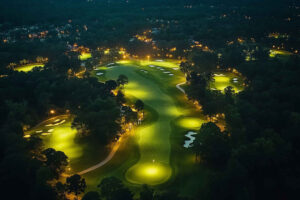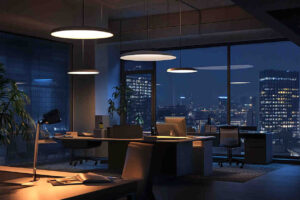Inefficient lighting systems result in terrible lighting, a ton of lamp changes, and a big electric bill. And if you don’t understand the maintenance factor, you’ll be in the dark on how to fix it. But when you understand the maintenance factor, you’ll have great lighting and save a ton of money.
The Maintenance Factor (MF) is how a lighting system performs over time compared to the amount of light it started with. It takes into account things like the lamps burning out, dirt on the light fixtures, and other factors that cause the light levels to decrease gradually over time. The MF includes factors like Lamp Lumen Maintenance Factor (LLMF), Luminaire Maintenance Factor (LMF), Lamp Survival Factor (LSF), and Room Surface Maintenance Factor (RSMF) to make sure your spaces stay lit properly over the life of your lighting system. Calculating the MF correctly helps you balance cost and performance so that you don’t over-light a space when you install it and don’t have to do maintenance on it every other week.
Still not sure why the maintenance factor is important? Let me explain why this is so important and what it means to you.
Table of Contents
What is the maintenance factor?
The maintenance factor (MF) is a critical concept to understand in lighting design. It is the ratio of how your lighting system performs over time compared to how your lighting system performs when it’s brand new. It accounts for your light bulbs burning out, the dirt on your light fixtures, and all the other things that cause your light levels to go down over time. The maintenance factor is what makes sure you have enough light in your building.
For instance, an MF of 0.8 means that your lighting system is supposed to have 80% of its original light output at a certain point in time. You use this factor to make sure that your building is lit properly even after you’ve lost some light. By using the maintenance factor to plan your lighting system, you don’t have to put in too much light to begin with and you don’t have to clean your lights or change them out as often. You balance the cost and the performance.
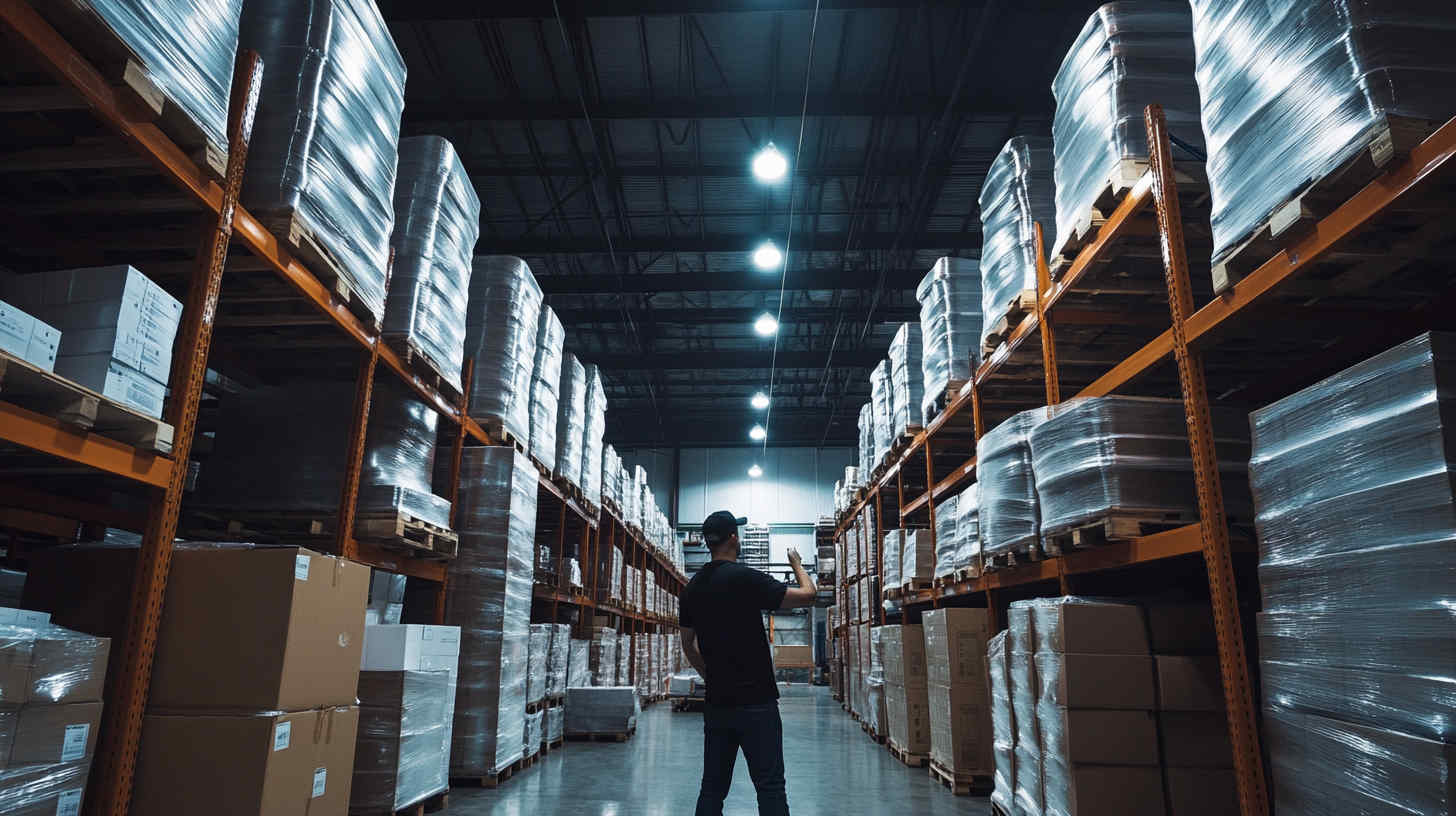
Why do we need to check the maintenance factor?
Checking the maintenance factor (MF) is important to make sure that your lighting system performs the way it’s supposed to over time. If you don’t pay attention to your MF, your building will get darker as your lights age. This leads to problems like you can’t see, it’s not safe, and you’re not compliant with lighting standards.
Here are key reasons why checking the maintenance factor is crucial:
Ensure Long-Term Performance: Over time, your light level goes down because of dirt on the fixtures and the light bulbs burning out. The MF helps you make sure you have enough light in your building.
Meet Standards and Regulations: Many different places, like workplaces, roads, and public places, have to meet certain standards for how much light you have to have in them. Calculating your MF helps you make sure you meet those standards.
Prevent Overdesign: By planning for the amount of light that you’re going to lose over time, you don’t have to put in as much light to begin with. That means you save money on your electric bill, and you save money on your initial installation.
Optimize Maintenance Schedules: Checking the MF tells you when you need to go clean your lights or change them out. That way you know how to balance your maintenance and your costs with how much light you’ve got.
By looking at your MF when you’re designing your lighting system, you can design a lighting system that provides great light, saves you a bunch of money, and that you can sleep at night knowing you’re compliant.
Factors Affecting Maintenance Factor
When calculating your maintenance factor (MF), there are a few specific factors that come into play. These are the factors that cause your light level to go down over time. This is how you make sure you have enough light in your building. Here are the factors that come into play when you’re calculating your MF:
1. Lamp Lumen Maintenance Factor (LLMF)
The first factor is the Lamp Lumen Maintenance Factor (LLMF). This is how much your lamp go down in light as they age. All light sources, including LEDs, fluorescent lights, and HID lights, go down in light over time. This is because of wear and tear and chemical changes inside the lamp. The LLMF is how much your lamps go down in light over time. This is usually represented as a percentage of how much light you have left. A typical LLMF might be 80% to 90% depending on the type of lamp you’re using.
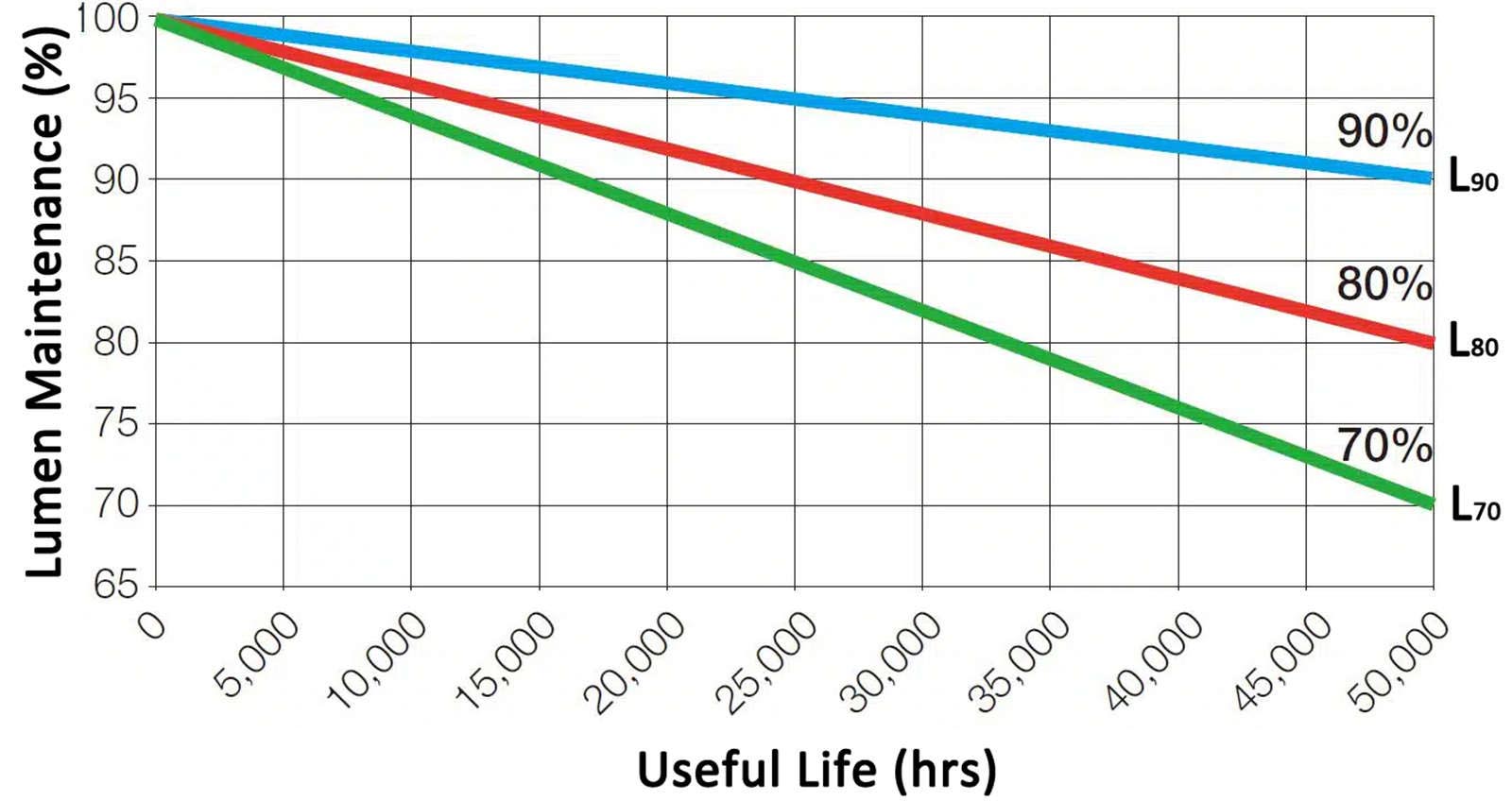
LED Lighting Lamp Lumen Maintenance over Time
2. Luminaire Maintenance Factor (LMF)
The second factor is the Luminaire Maintenance Factor (LMF). This is how dirty your light fixtures are. Over time, dirt and dust build up on your light fixtures, reflectors, and lenses. This dirt and dust block the light and make your fixtures not work as well as they should. The LMF is affected by things like how clean your environment is, what type of light fixture you have, and how often you clean your lights. A clean, well-maintained light fixture will have a higher LMF. A dirty, not well-maintained light fixture will have a lower LMF.
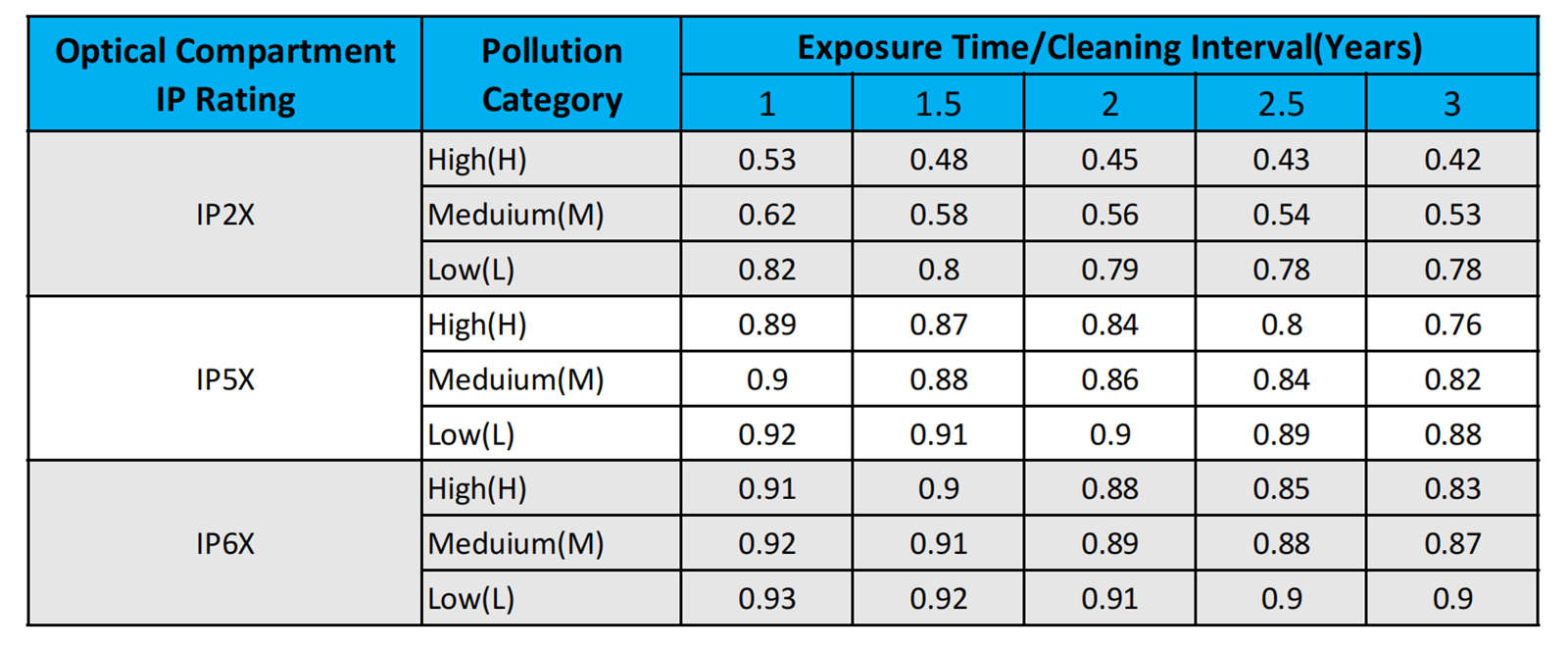
Luminaire Maintenance Factor
3. Lamp Survival Factor (LSF)
The third factor is the Lamp Survival Factor (LSF). This is how many of your lights are going to burn out or fail on you. The LSF is typically used to estimate how many lights you have left after a certain amount of time. This is important to know because you need to know how much light you have left. For example, if you have 90% of your lights left at a certain time, the LSF is 0.9. The LSF is especially important in big lighting installations because if a bunch of your lights go out, you’re going to be in the dark.
4. Room Surface Maintenance Factor (RSMF)
The fourth factor is the Room Surface Maintenance Factor (RSMF). This is how dirty your walls, ceilings, and floors are. Over time, your walls, ceilings, and floors get nasty, and they don’t reflect light as well as they should. The RSMF is affected by things like how clean your room is, what kind of surfaces you have, and how often you clean your room. If your walls, ceilings, and floors are white or light-colored, they’ll reflect light better than if they’re dark. Cleaning your room regularly will help your RSMF be higher, which means your lights will work better.

Space Maintenance Factor in Relation to Degree of Contamination and Maintenance Interval
These factors—Lamp Lumen Maintenance Factor (LLMF), Luminaire Maintenance Factor (LMF), Lamp Survival Factor (LSF), and Room Surface Maintenance Factor (RSMF)—work together to tell you how much light you have left in your building. By accounting for these factors when you’re designing your lighting system, you can predict how much light you’re going to have over the life of your system. This way you can make sure you have enough light in your building and that you’re meeting the performance standards you need to meet even as your lights get older.
How to Calculate the Maintenance Factor?
Calculating your maintenance factor (MF) involves multiplying a bunch of different numbers together. The MF is the result of multiplying all of these maintenance factors together for the lamp, luminaire, room surfaces, and other stuff. Here’s how you calculate your MF:
General Formula for Maintenance Factor (MF)
The maintenance factor is the product of the following individual factors:
MF=LLMF×LMF×LSF×RSMF
Where:
- LLMF= Lamp Lumen Maintenance Factor (accounting for the lamp’s lumen depreciation over time)
- LMF= Luminaire Maintenance Factor (accounting for dirt accumulation on the luminaire)
- LSF= Lamp Survival Factor (accounting for lamp failures)
- RSMF= Room Surface Maintenance Factor (accounting for the degradation of reflectivity from room surfaces)
Each of these factors needs to be determined based on the specific lighting system and environmental conditions.
Strategies for improving lighting maintenance factor
Improving your maintenance factor (MF) is important because it helps you keep your lights on without having to change all your lightbulbs. By improving your MF, you can keep your lights on and save money. Here are some strategies to improve your MF:
1. Use High-Quality Lamps and Luminaires
Investing in high-quality lighting products can significantly improve the Lamp Lumen Maintenance Factor (LLMF) and Luminaire Maintenance Factor (LMF). For example:
- LEDs tend to last longer and keep more of their light output than older lights, like fluorescent or halogen lights. They last longer and keep more of their light over time.
- High-quality lights are built to handle dirt better. Buy lights that are easy to clean and have coatings or are sealed so dirt doesn’t get into them. If you’re in a dirty or wet environment, you might need to buy IP-rated (Ingress Protection)lights to keep your lights working longer.
2. Implement Regular Cleaning and Maintenance
Dirt and dust on your lights, walls, and ceilings make your lights not work as well. To keep your Luminaire Maintenance Factor (LMF) and your Room Surface Maintenance Factor (RSMF) higher:
- Clean your lights and clean your room. It will keep your lights working right, and it will keep the light bouncing around your room so you don’t lose light.
- Install easily cleanable fixtures or use sealed fixtures to reduce the need for frequent cleaning.
3. Optimize Lamp Placement and Fixture Design
Proper lamp placement and fixture design can help reduce the impact of dirt buildup and ensure more efficient lighting:
- Use high-mounted fixtures in areas prone to dust and dirt. This can help reduce the frequency of cleaning and minimize the accumulation of dirt on the fixtures.
- Design the lighting layout so that it minimizes light spill and directs light exactly where it’s needed, making the space more efficient and requiring less light output to achieve the desired illumination.
4. Select Appropriate Room Surfaces
The reflectivity of room surfaces significantly influences the Room Surface Maintenance Factor (RSMF). To improve the RSMF:
- Choose lighter-colored walls and ceilings to reflect more light. Bright, reflective surfaces help maintain a higher RSMF and distribute light more effectively throughout the space.
- Use washable or wipeable paints and materials for surfaces, making it easier to maintain cleanliness and prevent reflectivity degradation.
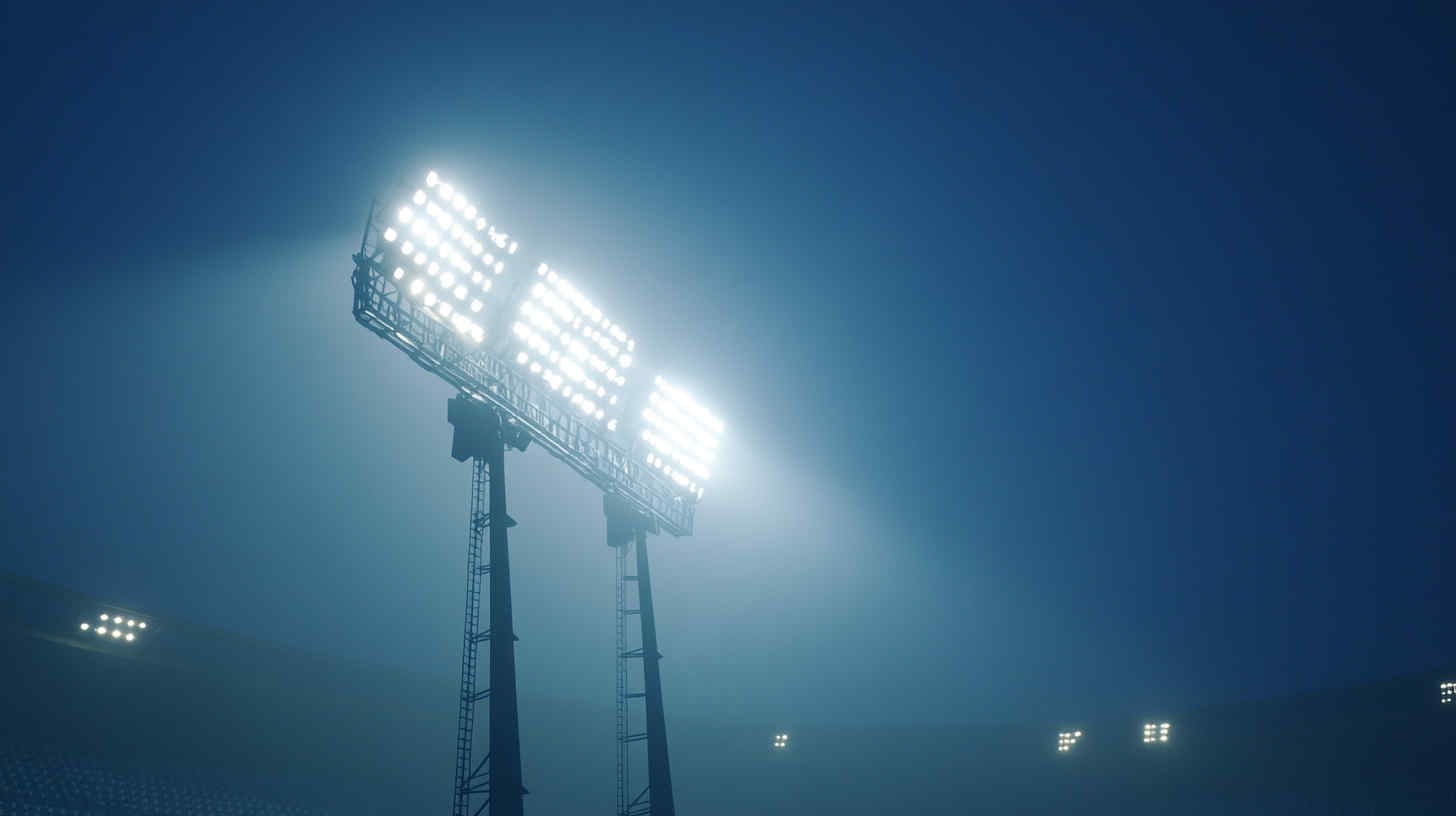
5. Utilize Lamp and Fixture Diagnostics
Modern lighting systems often include smart controls or diagnostic features that can help monitor lamp performance:
- Use lamp failure sensors to detect when lamps are nearing the end of their life, allowing you to replace them before they affect the overall system performance.
- Integrate automatic dimming or controls that adjust light levels based on occupancy or natural daylight. This reduces the wear and tear on lamps, potentially increasing their Lamp Survival Factor (LSF) and extending their lifespan.
6. Ensure Proper Environmental Conditions
Environmental factors play a significant role in how well the lighting system performs:
- Control the humidity and the temperature in your building. If you’re in a place where it’s really humid or really hot, you need to control the humidity and the temperature in your building. If you’re in a high-humidity area, you might need to buy lights that are rated for moisture resistance so your lights don’t fail and you don’t get corrosion.
- Don’t let nasty chemicals or bad stuff touch them, because that will eat up your lamps and fixtures, which will lower your MF.
7. Use Energy-Efficient Lighting Technologies
When you go to energy-efficient lighting technologies, you save money on your energy costs, and you help your MF because you slow down how fast your lights and lighting system degrade.
- LEDs are more energy-efficient and have a much longer lifespan than traditional incandescent or fluorescent lamps, helping to maintain a higher Lamp Lumen Maintenance Factor (LLMF) and Lamp Survival Factor (LSF).
- Smart lighting controls, such as motion sensors and daylight harvesting systems, can help reduce the amount of time lights are on, lowering the stress on the lamps and prolonging their life.
8. Use Extended Warranty and Lamp Replacement Programs
Consider getting the extended warranty and the lamp replacement program that are offered by the manufacturer. That way, if a lamp or fixture fails before it’s supposed to, you get a new one. This will improve your LSF and keep you from having problems down the road.
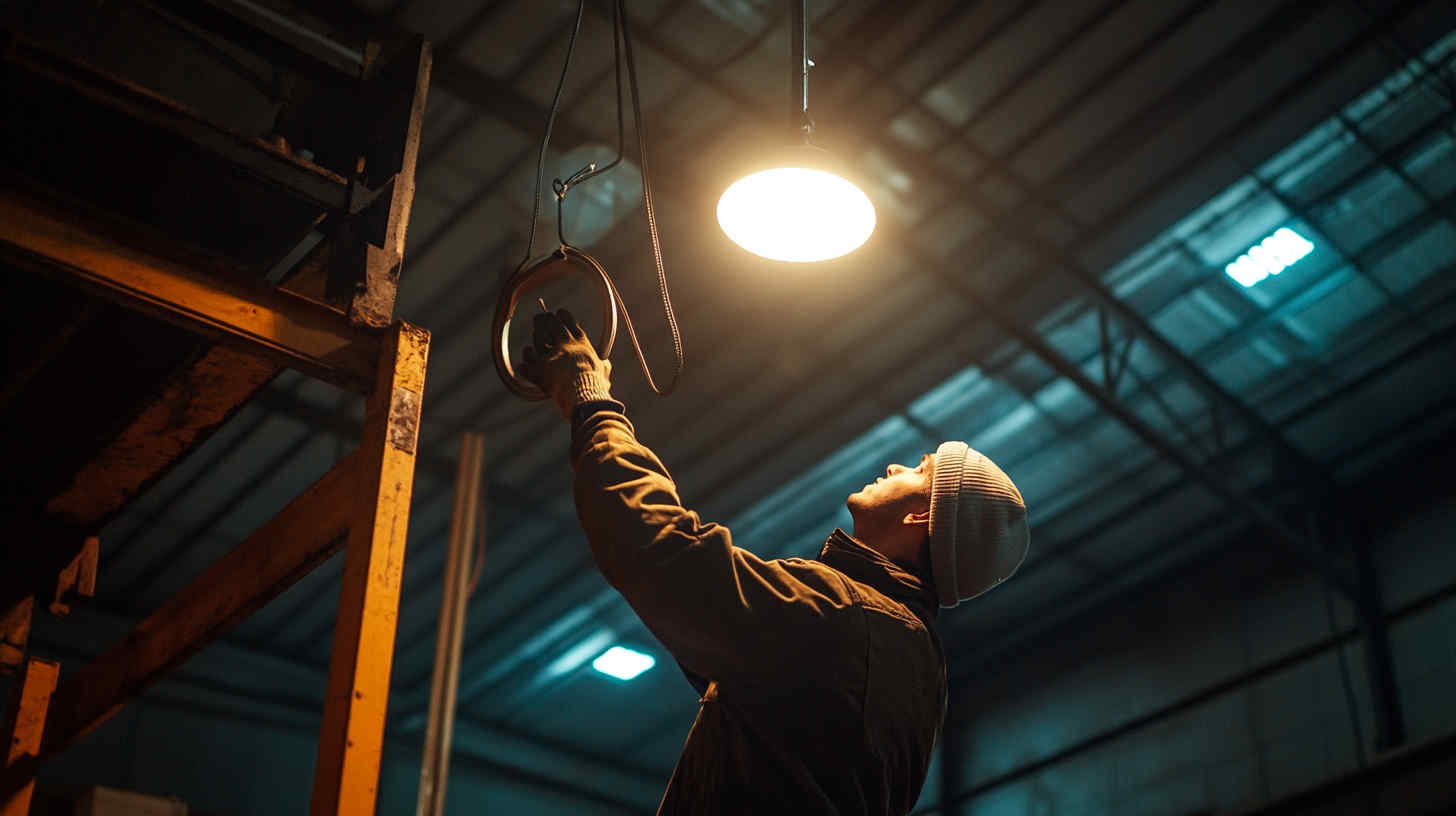
FAQs about Maintenance Factor in Lighting
What is Considered Light Maintenance?
Light maintenance refers to the things you do to keep your lights working well and shining bright. These include cleaning your fixtures, changing your lamps when they start to get old or burn out, looking at your fixtures to see if they’re damaged, and updating your controls. When you do these things, you keep your lights at the right level and you don’t have things break on you.
What is the Maintenance Factor and Light Loss Factor?
The Maintenance Factor(MF) is the ratio of how bright your lights are after a certain amount of time to how bright they were when you put them in. It takes into account things like the lamps getting dimmer, dirt building up on the fixtures, and all the other things that cause your light to go away. The Light Loss Factor(LLF) is the big term that includes all the things that make your light go away, including the MF. Together, they tell you how your lights are going to work overtime and make sure you design for the real world.
What is Lighting System Maintenance?
Lighting system maintenance includes everything you do to keep your lights working. This means cleaning your fixtures, changing out things that get old, readjusting your controls, and keeping your fixtures safe and working right. For LEDs, this means taking care of the heat and making sure your drivers are working properly. When you do these things, your LEDs will last longer and shine bright.
What is the Maintenance Factor in Dialux?
In Dialux, the Maintenance Factor(MF) is a number you put in to tell the program how your lights are going to work over time. You put in this number based on what you think is going to happen with your lights, when you’re going to clean them, what the conditions are going to be like, etc. This number tells the program how your lights are going to work over time.
What is a Lighting Maintenance Factor?
The Lighting Maintenance Factor is the number you put in to take into account that your lights are going to get dirty and nasty and not work as well over time. It’s different for different lamps, how often you’re going to clean them, and what the environment is like. For example, an LED system in a clean environment might have a higher LMF than a fluorescent system in a dusty, dirty industrial environment.
What Are the Maintenance Factors?
Several factors contribute to the maintenance factor, including:
- Lamp Lumen Depreciation (LLD): Reduction in light output as lamps age.
- Luminaire Dirt Depreciation (LDD): Light loss due to dirt accumulation.
- Room Surface Depreciation (RSD): Changes in surface reflectance over time.
- Lamp Burnout Factor (LBF): Impact of failed lamps on total output.
By understanding these components, designers can ensure reliable, long-lasting lighting systems.
What is the Lumen Maintenance Factor (LMF)?
The Lumen Maintenance Factor (LMF) is the percentage of light that your light source makes when you first put it in compared to how much light it makes later. This is especially important with LEDs because they don’t just burn out, they get dimmer and dimmer. The higher the LMF, the better your lights are going to work over time.
How to Calculate the Maintenance Factor?
The maintenance factor is calculated using the formula:
MF=LLMF×LMF×LSF×RSMF
Where:
- LLMF= Lamp Lumen Maintenance Factor (accounting for the lamp’s lumen depreciation over time)
- LMF= Luminaire Maintenance Factor (accounting for dirt accumulation on the luminaire)
- LSF= Lamp Survival Factor (accounting for lamp failures)
- RSMF= Room Surface Maintenance Factor (accounting for the degradation of reflectivity from room surfaces)
This formula provides a precise understanding of expected system performance.
What is the Difference Between the Maintenance Factor and the Depreciation Factor?
The Maintenance Factor(MF) is how much light you have when you’re done compared to how much light you put in. The Depreciation Factor(DF) is how much light you lose, and it’s based on dirt, age, and all the other things that cause your lights to go away.
Conclusion
Knowing about and understanding the maintenance factor is critically important if you’re going to design good, long-lasting lighting systems. When you know about and apply the maintenance factor, you can make sure your lights stay at the right level and don’t go away on you. When you apply maintenance factors, you make good, efficient designs. You save people money, and they think you’re a rock star.
If you need help with LED lighting or have questions, please feel free to reach out to us directly. Our team of lighting experts is here to help.


